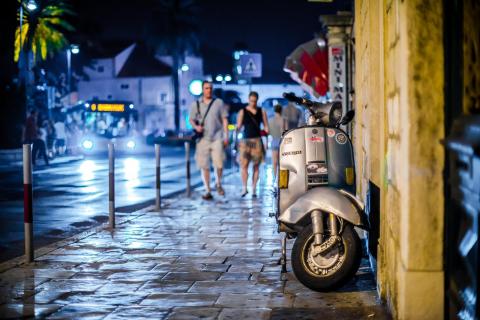Report: Assessment of the national Long-Term Strategies of Austria, Croatia and Slovenia
This reports presents the finding of analysing the long-term climate strategies of Slovenia, Croatia and Austria.
The LTS analysis Austria, Croatia and Slovenia showed some common practices as well as plenty of differences in shaping the future to low-carbon societies. For all three countries, the submitted long-term strategies are the first attempt of such strategies. Therefore, they present the current long-term vision and directions in which countries are planning to follow for the next 30 years (until 2050). They all include quantified targets. Austria and Slovenia are aiming for climate neutrality. On the other hand, the target for Croatia in 2050 is not to become climate neutral (like Austria and Slovenia), but the strategy gives a range of predicted reduction of emissions according to the scenario analysis, although Croatia also did a preliminary scenario analysis for achieving net zero, based on the EU directions. The biggest room for improvement in all three strategies is in the sections of long-term strategies covering financing and economic assessment, especially in socio-economics impacts and distributive impacts.
The aim of this comparison of long-term strategies of these three EU countries was to identify best practices and weaknesses of their strategies, to present different approaches, as well as to provide guidelines for future update of the document, which should be done every 5 years, if necessary.
The analysis provides a crosscutting section in each chapter, based on the findings in the three analysed strategies, and gives recommendations for future updates of the strategies:
- Modelling: In the future, more graphical content should be included in the document, as well as clear statements of how the data has been derived, which was sometimes blurry in the case of Austria.
- Targets: Although strategies are long-term documents for better implementation and setting a clear path, mid-term goals should be clearly specified, not only for emission reductions, but also for energy efficiency and share of renewables.
- Sectoral approach: The Slovenian strategy could set an example of how sectoral approaches should be done-first providing data on current emissions, which is followed by a projection trajectory. The same approach is used for all sectors, which was not the case for the other two strategies.
- Research and development: In the case of AT, HR and SI, the research and development sector is a mix-match; some define the finance devoted to R&D, others mentioning sectors of extensive research needed. All three countries should put more emphasis on the R&D in the future updates of the strategies and develop a clear vision for this sector.
- Economic assessment: None of the countries provided a socio-economic impact for 2050. It is important to include aspects of just transition in the document and to identify the most vulnerable groups. In the update, strategy makers should focus on the transition’s impact on economy, identifying vulnerable groups that are at risk of losing their jobs, the distribution of decarbonisation cost between regions and social groups, energy poverty, as well as providing policies and measures to counteract these negative consequences.
- Public consultation: In general, all three countries recognised the importance of early public involvement in the preparation of such an important document. The Austrian strategy can be set as an example since there is a clear traceability how the public consultation information was included in the document.
- Governance: All three countries provide general information on the governance structure, but none of the strategies contains specifics of what will be done on the governance level, by when and who will be responsible for what, so there is a room for improvement in all three countries in the future update.
- Regional cooperation: Difficulties in comparing the strategies translate into difficulties in managing them at the regional and EU level.As a result, the processes and efforts are disintegrated into individual countries without efforts to integrate and synergise in the areas where it is possible. There are also positive sides: the diverse approach of different countries gives the opportunity to study ideas and solutions, drawing abovementioned best practices as well as cross-cutting issues. This creates an opportunity for cooperation not only in the context of greater integration of cross-border activities, but also in the context of strategy development and energy transition management.
Trstenjak, K., Urbančič, A. (2022): Assessment of the national Long-Term Strategies of Austria, Croatia and Slovenia, Jožef Stefan Institute, Ljubljana.
mag. Andreja Urbančič
Jožef Stefan Institute
